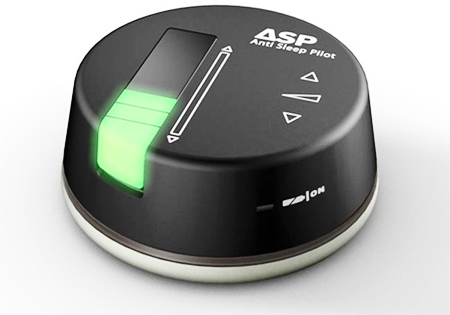The Swedish National Road and Transport Research Institute stated that on a 2008 study about 20 percent of all road traffic accidents are caused by driver fatigue. Tired motorists are also eight times more likely than refreshed motorists to get in an accident, displaying driving abilities similar to those of someone who is intoxicated.
The problem is, we often don’t know when we’ve reached that “too tired” state – which is where the Anti Sleep Pilot is supposed to assist the driver. The Danish device sits on the dashboard, monitoring you and your driving conditions, and lets you know when it’s time to pull over and take a ten minute rest.
 Anti Sleep Pilot
Anti Sleep Pilot
Before starting the trip, you complete a short test to determine your personal risk profile. This information is stored by twisting a knob on the bottom of the unit, so several drivers can keep and access their profiles on one device.
Once you start driving, the Pilot continuously calculates your fatigue level, and displays your status. Its calculations combine 26 different parameters, including your personal risk profile, your fatigue status when you started driving, and input from a clock and accelerometer. It also maintains and measures driver alertness through occasional reactive tests, in which you must touch the device as soon as indicated. The longer you take to react, the slower your reaction time is becoming.
When the combination of variables indicate that you’re reaching your limit, the Pilot’s visible and audible signals alert you to the fact that you need to take a break – the device is light and sound-sensitive, so its display and alarm automatically adjust for cabin conditions. As the unit is able to monitor time and vehicle speed, it also knows how long you’ve stopped for, so there’s no pulling over for only a few seconds just to shut it up.
Currently this device is only available in Denmark, although you can pre-order on the company website. Its price should be around US$250.




